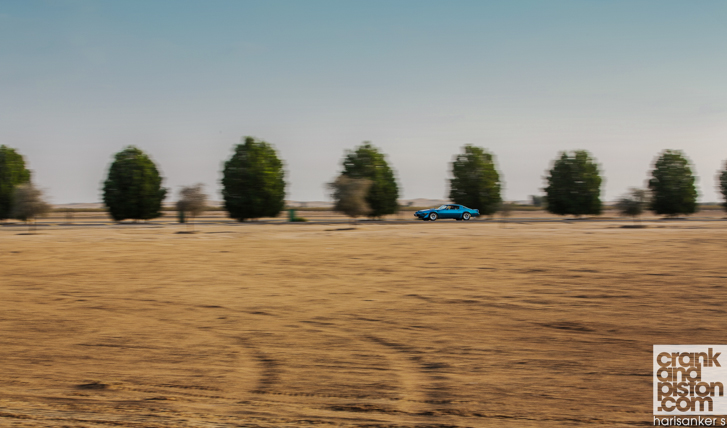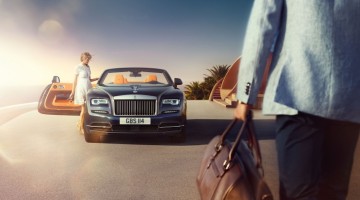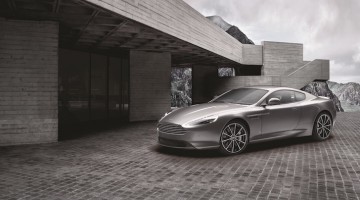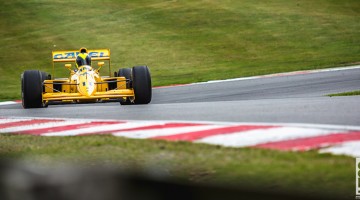As you can imagine my concentration levels are pretty high as I cruise into traffic, the first heart-stopper being the indicator spindle, almost crystal-like in its delicacy and which I worry will shear off in my hand. And it’s not just the indicator leaving me short of breath. The long, long bonnet is stunning to look at but makes visibility a little disorientating: for a while, I can’t honestly tell where the front of it is, and am fearful that my first clue will be the sound of my front bumper’s endura rubber cleaving in two. I would stick on the one song I want to hear from the Jerry Read eight-track tape to calm myself but, y’know, one shit at a time.
My main concern however is with the brakes, particularly in traffic. This is my first ever run in a ‘70s muscle car and, given the braking distance required, I can tell I’ve grown used to today’s comparatively lightning stopping distances. There’s a huge amount of travel in the pedal, the bite itself only appearing towards the very end and with not quite the effect I had been hoping for: given the weight of the Pontiac, the stopping distance is much further than I expected, and several times I check my side mirrors to see if I have enough room for evasive manoeuvres. The heart rate is getting quite high now, and I haven’t even had my first taste of the handling yet. This creeps in a few moments later as I take the long sweeping entrance onto the highway. This monster weighs 2124kg and the suspension comprises leaf springs. So yes. There’s some seriously impressive bodyroll.
I have to remind myself that, unlike today, muscle cars were designed for one thing and one thing only: going in a straight-line, really quite fast. Taking corners like a greyhound is almost immaterial, so to expect any more from the Firebird would be unreasonable. And so it is that as I make my way onto the highway, I plant the right foot (I would downshift but the automatic box doesn’t give me that option) to see just how much those 6.6-litres can offer.
And once again, I’m reminded just how much has changed since 1979.

Acceleration is linear. No sudden bolt of energy, no sense of lag before a turbo or supercharger kicks in, no ear-drum piercing roar from the V8 as the revs rise. It all feels very civilised as the speedometer needle begins to rise. It’s only then that I notice the gauge only goes up to 160kph: the ’79 Firebird’s top speed is less then than a Volkswagen Golf. It’s less even than a Toyota Camry. I’m starting to wonder how The Bandit managed to outrun the police across more than 1500km and still complete his return run in 28 hours with only 185bhp to work with.
A little further down the road and having mercifully avoided all other road users, I’m starting to get the hang of the brakes and the acceleration. We’ve turned off the highway and are focusing on the local back routes. I’ve given up expecting the tarmac to ripple underneath me under hard acceleration and am now focusing on the cruise up to speed. Handling though is still taking some getting used to. The nose, not exactly under my control to begin with, starts to pull wide through the corners, a result of a heavy V8 powerplant and some spectacularly soft suspension: it’s so softly sprung, the sound of the springs tightening as we hit some speed bumps is like an elastic band being twisted. Few vehicles I’ve experienced in my time have floated through a corner in the same way the Firebird has: I even have to lean my left elbow quite firmly against the door.
But here’s the thing: I like the Trans-Am.

No honestly, I do. The old school muscle car has always fascinated me, the embodiment of an era in American automotive history that few generations have managed to equal. Sure, a super-sized engine, big power and a sharp design were the attention grabbers, but so too was an affordable price tag and a civility required for day-to-day running. Unfortunately a greater focus on technology and fuel economy means contemporary muscle cars do not quite ignite public fascination in the way their forebears did (the lukewarm reaction to the new four-cylinder Ford Mustang springs to mind). It’s why the Firebird – alongside the endorsement potential – was picked as the car for The Bandit run. It’s why it fascinated a generation and still does today.
Our drive comes to a temporary halt at a petrol station, our ‘hard going’ and a 23L/100km average fuel consumption leading to an inevitable fuel stop. And once again, the pull of the 70s muscle car brings interested parties in: all except the gentleman filling the tank, who’s more amused by the fuel filler cap’s position above the rear bumper. I take in the sight, at the same time wondering if Sally Field and her wedding dress will play a part in proceedings today, or whether the lady behind the Seattle Coffee counter will know what on earth I’m talking about if I order a Diablo sandwich and Dr Pepper ‘cause I’m in a goddamned hurry.
Probably not, but I’m sure others will. It’s a legacy after all that’s been four decades in the making, both on the road and the silver screen.
Technical specifications available on page 3



